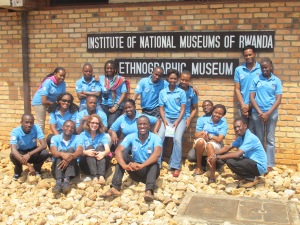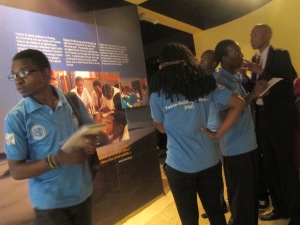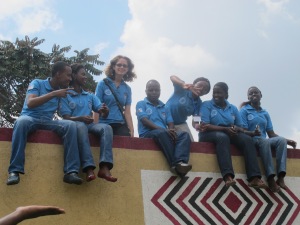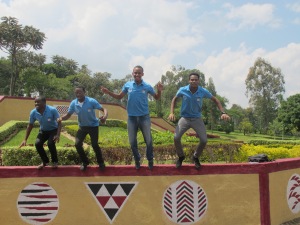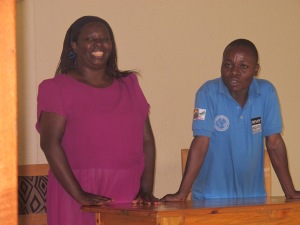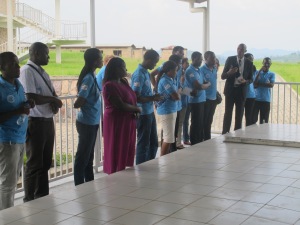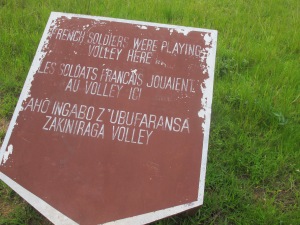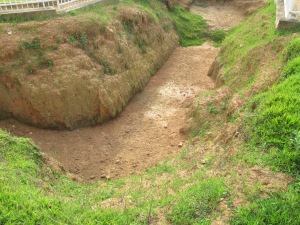By Francis Kessy (Participant from Tanzania)
Our stay in Huye District continues and we woke up to a bright and sunny start characterized by pure Rwandan serenity. First on the agenda was a visit to Institute of National Museums of Rwanda which was nearby.
We toured the museum which had a wide range of knowledge about Rwanda as a country, its history and traditions. We were able to go through the long range of knowledge at display guided by a very enthusiastic guide who left no stone unturned.
After the tour of the museum, we had a chance to watch a traditional dance performed by a dance troupe. This was very exciting and majority of us joined in. It was interesting to see the close relationship the dance style had to the cattle keeping tradition of the Rwandan people. The music and songs too were reflective of the general message that called for unity and reconciliation among Rwandan people.
In the afternoon, we received a clinical psychologist at the lodging in St. Vincent who was to prepare us for the visit to Murambi Genocide memorial. This particular sight was loathed because it is one of the places where the bodies of massacred Tutsi have been preserved in their original state and this experience is particularly hard for many people. We did a couple of drills that helped us learn how to deal with emotions.
The drive to Murambi was characterized by an unusual silence; perhaps out of fear of the unknown. Along the way, we saw similar sights of households on the road, farmland and farm people cultivating crops such as rice. Occasionally we chanced upon kids playing on roadside or a tired traveler who gave way for our bus to pass.
At Murambi Genocide Memorial, we came to learn that this site was meant to be a Technical school that would open in September 1994 but had been turned into a killing place by the government of Rwanda and France due to its strategic location. Murambi hill is located in a valley surrounded by many other hills. It is a “trap house” in terms of military warfare because once located there, one cannot escape without the sight of pursuers. The guide told us that hundreds of thousands of Tutsis had been led here by the government under the disguise of protecting them only to lead them to their slaughter. Literally, they could not run or hide due to the strategic location of the hill.
After touring the museum, we headed over to see some mass graves and said a little prayer for the departed. Then there was the option for those who wanted to go and see the bodies in the classrooms. This was the most frightening bit of the tour since we were told that we would find bones of people displayed in their original state. There was a total of 24 rooms all filled with bodies of men, women and children who had been clobbered to death. As you entered the room, you would be hit by a strong smell mostly from decaying human bodies and then a ghostly sight that would numb your nerves! You look one side and see a skeleton of a mother holding unto a skeleton of her baby; she had probably died trying to protect her child, then you see skeletons of women whose hands are cupped as if in prayer for mercy… We moved from room to room and the trauma, the silence, the pain, the anger, the tears…cannot be expressed on mere paper. Deep down in our hearts, we all prayed silently that this should NEVER happen again!
We ended our tour with a visit to a place of mass graves where the French soldiers had constructed a volley ball pitch. They used to play volleyball on top of mass graves in order to conceal the killings! To say that we were disappointed would be an understatement!
The tour ended with a session with the psychologist who did her best to try to revive our sunken spirits. She taught us about the need for inner peace as a source of energy. Afterwards, we traveled back to Butare in mostly silence and feigned courage on some people’s faces. But truth be told, we were in shock!
